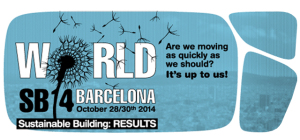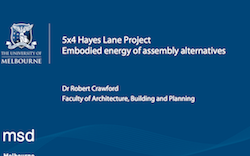Our humble 5×4 Project has developed more global momentum this week after being presented at the World Sustainability Conference (WSC) in Barcelona. A case study on the project by R.H. Crawford and T. Hollingsbee was presented, which assessed the Embodied Energy of our building, and how we have optimised its energy performance. The Embodied Energy is the consumption of energy over the lifespan of the building, including construction, materials manufacturing, and of course recurring energy costs – such as appliances etc.
The case study and resulting presentation looked at measures that the 5×4 project had taken to substantially lower the embodied energy of the building, and using environmentally friendly materials and appliances, building consciously for minimum energy consumption, and finally generating green electricity through solar power to cover the remaining energy costs.
Click here to download the complete paper, or visit the WSC website for more about their sustainable ambitions and their next conference in 2017.




